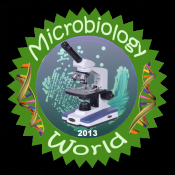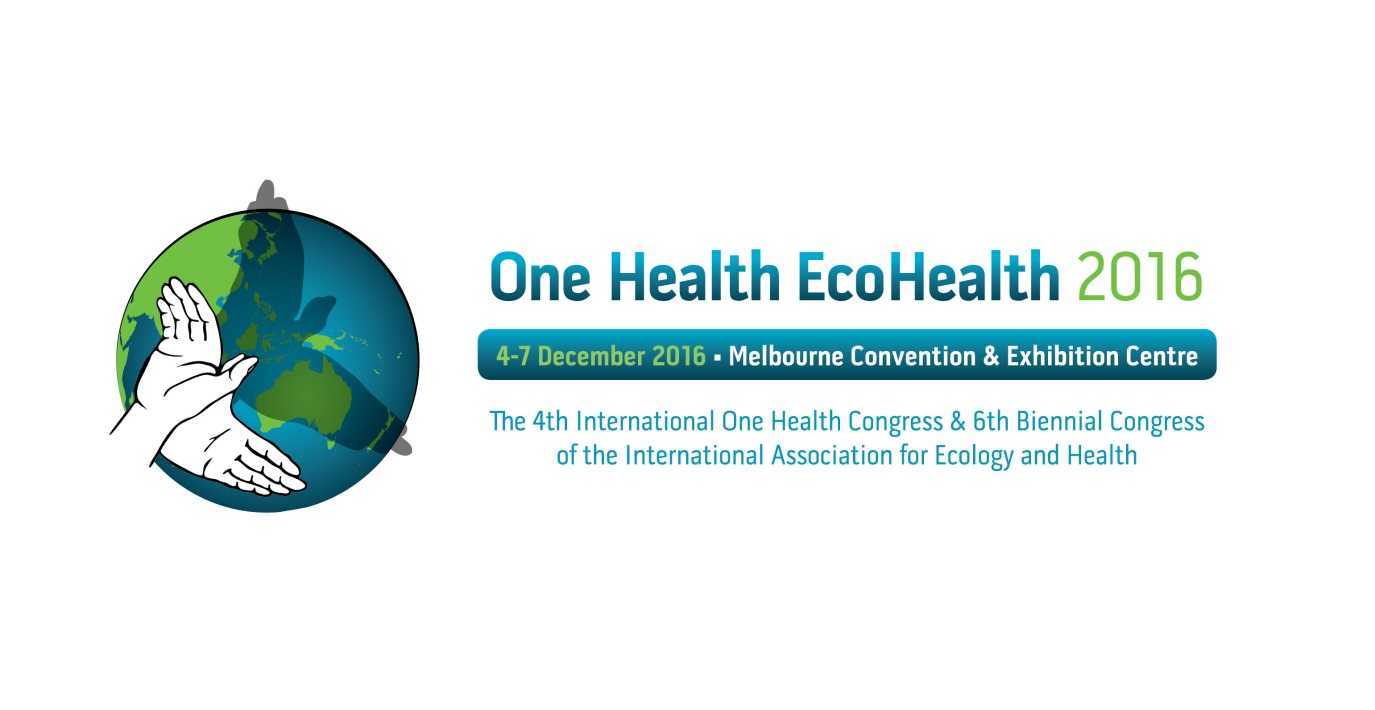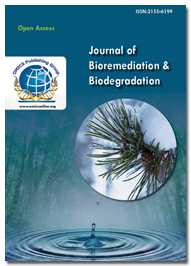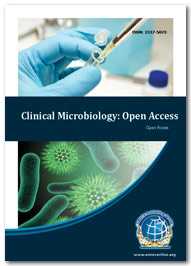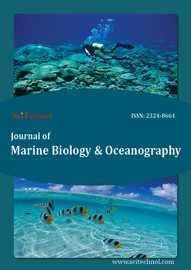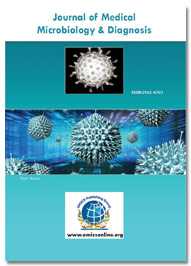Theme: State-of-the-art Trends in Applied Microbial Industries, Biotech and Pharmaceuticals
Applied Microbiology-2015
Today microbiologists are required in top organizations like NASA for identification of any life form for their various missions like the recent Mars curiosity mission and many more. The scope is immense; just what is needed is right application of knowledge. With such a scope in microbiology what today’s students, professionals need is just a change of their mindsets , a change in their imagination , a thinking beyond circle, rest as mentioned earlier, knowledge and technology will take care to make them successful. Job is a way to apply knowledge but innovation and imagination is a way to destination and Einstein rightly said that “imagination is powerful than knowledge”.
Currently Asia Pacific and Rest of the World account for larger market share for microbiology culture. Laboratories in North American and European countries receive huge funding from government and other sources; hence have highly equipped laboratories with latest technology expensive devices, which reduce the use of microbiology culture methods. On the contrary, due to economic restraints, laboratories in developing countries of Asia Pacific receive lesser funds. This leads to increased use of cost effective microbiology culture methods. Large pharmaceutical sector and numerous research laboratories is a large customer base in these regions.
The recently expanded Europe provides many opportunities for microbiologists. In fact, microbiology is a traditionally well-rooted scientific discipline in many Eastern countries. The European Commission, through ERA and the 6th Framework Program, is launching a strong policy of scientists' mobility in order to ensure that opportunities exist all over the continent.
Some of the key players in the microbiology culture market include Hi Media Laboratories, bioMerieux, Sigma Aldrich, Invitrogen, Thermo Fisher Scientific Inc., and Bio-Rad Laboratories, Inc. among others.
Title: "The interface of preserved wood and soil microbial communities"
Organizer: Prof Matthias Noll, Coburg University of Applied Sciences and Arts, Bioanalytics, Coburg, Germany
Conference Sessions
Pharmaceutical Microbiology
Clinical Microbiology (Infectious Diseases and Hygeine)
Medical Microbiology
Industrial Microbiology
Food Microbiology
Marine Microbiology
Environmental Microbiology- (Microbial Ecology and Diversity) (Session Chair: Dr Willy Verstraete, Gent University)
Agricultural Microbiology- (Plant Microbiology and Pathology)
Soil Microbiology- (Session Chair: Prof matthias Noll, Coburg University)
Geo Microbiology
Biofuels/Petroleum Microbiology- (Session Chair: Prof Armen Trchounian, Yerevan State University)
Aquatic Microbiology
Veterinary Microbiology
Aero Microbiology
APPLIED MICROBIOLOGY
Medical microbiology is a branch of medicine concerned with the aversion, diagnosis and treatment of infectious diseases. In integration, this field of science studies sundry clinical applications of microbes for the amelioration of health. There are four kinds of microorganisms that cause infectious disease: bacteria, fungi, parasites and viruses and one type of infectious protein called a prion. Medical microbiologists often make treatment recommendations to the patient’s medico predicated on the strain of microbe and its antibiotic resistances, the site of infection, the potential toxicity of antimicrobial drugs and any drug allergies the patient has. Medical microbiology is not only about diagnosing and treating disease; it additionally involves the study of benign microbes. Microbes have been shown to be subsidiary in combating infectious disease and promoting health. Treatments can be developed from microbes, as demonstrated by Alexander Fleming's revelation of penicillin as well as the development of incipient antibiotics from the bacterial genus Streptomyces among many others. Not only are microorganisms a source of antibiotics but some may withal act as probiotics to provide health benefits to the host, such as providing better gastrointestinal health or inhibiting pathogens.
Pharmaceutical Microbiology is an applied branch of Microbiology. It involves the study of microorganisms associated with the manufacture of pharmaceuticals e.g. minimizing the number of microorganisms in a process environment, omitting microorganisms and microbial by-products like exotoxin and endotoxin from water and other starting materials, and ascertaining the culminated pharmaceutical product is sterile Other aspects of pharmaceutical microbiology include the research and development of anti-infective agents, the utilization of microorganisms to detect mutagenic and carcinogenic activity in prospective drugs, and the utilization of microorganisms in the manufacture of pharmaceutical products like insulin and human magnification hormone. Pharmaceutical microbiologists are required to assess cleanrooms and controlled environments for contamination (viable and particulate) and to introduce contamination control strategies. This includes a construal of peril assessment. . While inoculation of human pathogenic bacteria, fungi or viruses poses the most conspicuous peril to the patient, it should additionally be realized that microorganisms conventionally regarded as non-pathogenic which inadvertently gain access to body cavities in sufficiently astronomically immense numbers can withal result in an astringent, often fatal, infection. Consequently, injections, ophthalmic preparations, irrigation fluids, dialysis solutions, sutures and ligatures, implants, certain surgical dressings, as well as instruments indispensable for their utilization or administration, must be presented for use in a sterile condition and in such a way that they remain sterile throughout the period of avail. Principles of the methods employed to sterilize pharmaceutical products are autoclaving and filtration as opportune methods applicable to aqueous liquids, and dry heat for nonaqueous and dry solid preparations.
The field of modern aliment microbiology, includes recent developments in the procedures used to assay and control microbiological quality in food. It covers the three main themes of the interaction of micro-organisms with victuals-spoilage, foodborne illness and victuals fermentation and gives balanced attention to both the positive and negative aspects which result. It additionally discusses the factors affecting the presence of micro-organisms in foods, as well as their capacity to survive and grow. Microbes accommodate many utilizable purposes to humans. We utilize them inside our bodies with natural digestion processes. We additionally utilize them in industry and pabulum engenderment, like dairy products. Aliment like cheese, pickles, chocolate, bread, wine, potation and soy sauce are all made with the avail of variants of bacteria and yeast. In most of these pabulum products, bacteria play a major role because they engender lactic acid. Fermentation of pabulum is commonly used to process pabulum for making potations, leavening of bread and preserving foods. We have 100 trillion microbes in our gut—more bacteria than cells in the body. They avail in digestion and detoxification, avail support our immune system, and manufacture key vitamins, among other functions. We incline to cerebrate of microbes as lamentable pathogens that need to be killed but incipient research suggests that storing scores of them is paramount to our health and metabolism. One of the most paramount things microbes do for us is to avail with digestion. The commix of microbes in your gut can affect how well you utilize and store energy from victuals. Food safety is a public health priority; millions of people fall ill every year and many die as a result of victualing unsafe pabulum. Solemn outbreaks of foodborne disease have been documented on every continent in the past decade, and in many countries rates of illnesses are incrementing significantly.
Environmental microbiology is the study of the composition and physiology of microbial communities in the environment. The environment in this case denotes the soil, dihydrogen monoxide, air and sediments covering the planet and can withal include the animals and plants that inhabit these areas. Environmental microbiology withal includes the study of microorganisms that subsist in artificial environments such as bioreactors. Molecular biology has revolutionized the study of microorganisms in the environment and amended our construal of the composition, phylogeny, and physiology of microbial communities. The current molecular toolbox encompasses a range of DNA-predicated technologies and incipient methods for the study of RNA and proteins extracted from environmental samples. Microbial life is astonishingly diverse and microorganisms literally cover the planet. It is estimated that we ken fewer than 1% of the microbial species on Earth. Microorganisms can survive in some of the most extreme environments on the planet and some can survive high temperatures, often above 100°C, as found in geysers, ebony smokers, and oil wells. Some are found in very arctic habitats and others in highly salt saline, acidic, or alkaline dihydrogen monoxide. An average gram of soil contains approximately one billion (1,000,000,000) microbes representing probably several thousand species. Microorganisms have special impact on the whole biosphere. They are the backbone of ecosystems of the zones where light cannot approach. In such zones, chemosynthetic bacteria are present which provide energy and carbon to the other organisms there. Some microbes are decomposers which have ability to recycle the nutrients. So, microbes have a special role in biogeochemical cycles. Microbes, especially bacteria, are of great importance in the sense that their symbiotic relationship (either positive or negative) has special effects on the ecosystem.
Industrial microbiology is primarily associated with the commercial exploitation of microorganisms, and involves processes and products that are of major economic, environmental and gregarious consequentiality throughout the world. There are two key aspects of industrial microbiology, the first relating to engenderment of valuable microbial products via fermentation processes. These include traditional fermented foods and beverages, such as bread, potation, cheese and wine, which have been engendered for thousands of years. In additament, over the last hundred years or so, microorganisms have been further employed in the engenderment of numerous chemical feedstock, energy sources, enzymes, aliment ingredients and pharmaceuticals. The second aspect is the role of microorganisms in providing accommodations, particularly for waste treatment and pollution control, which utilizes their abilities to degrade virtually all natural and man-made products. However, such activities must be controlled while these materials are in utilization, otherwise consequent bio deterioration leads to major economic loses, and Industrial microorganisms are mundanely cultivated under rigorously controlled conditions developed to optimize the magnification of the organism or engenderment of a target microbial product. The synthesis of microbial metabolites is conventionally tightly regulated by the microbial cell. Consequently, in order to obtain high yields, the environmental conditions that trigger regulatory mechanisms, particularly repression and feedback inhibition, must be evaded. Fermentations are performed in astronomically immense fermenters often with capacities of several thousand litres. These range from simple tanks, which may be stirred or unstirred, to intricate integrated systems involving varying levels of computer control. The fermenter and associated pipework, etc., must be constructed of materials, conventionally stainless steel, that can be perpetually sterilized and that will not react adversely with the microorganisms or with the target products. The mode of fermenter operation (batch, victualed-batch or perpetual systems), the method of its aeration and agitation, where indispensable, and the approach taken to process scale-up have major influences on fermentation performance.
Clinical microbiologists are often confronted with making identifications within this heterogeneous group as well as with considerations of the clinical paramount of such isolates. It provides comprehensive information on the identification of different bacteria and outlines recent vicissitudes in taxonomy. Bacterial profiling is the relegation of bacteria predicated on experiments, resulting expeditious identification. This system is developed for expeditious identification of clinically germane bacteria and hence only kenned bacteria can be identified. The predominant proteomic technologies that have been explored for bacterial identification and characterization include matrix-availed laser desorption/ionization time-of-flight mass spectrometry (MALDI-TOF-MS); electro spray ionization mass spectrometry (ESI-MS); surface-enhanced laser desorption/ionization (SELDI) mass spectrometry; one- or two-dimensional sodium dodecyl sulphate–polyacrylamide gel electrophoresis (SDS-PAGE); or the coalescence of mass spectrometry, gel electrophoresis, and bioinformatics. In the context of plants, two symbiotic systems have been actively studied for many years. One is arbuscular mycorrhizal (AM) symbiosis and the other is root nodule (RN) symbiosis. Oral bacteria have evolved mechanisms to sense their environment and eschew or modify the host. Bacteria occupy the ecological niche provided by both the tooth surface and gingival epithelium. There is evidence of bacteria resistant to both biocides and antibiotics occurring in hospitals, and this resistance can be transferred to other bacterial strains. The plasmids can be transferred between prokaryotes through horizontal gene transfer.
Marine microbiology is the study of microorganisms and non-organismic microbes that exist in saltwater environments, including the open ocean, coastal waters, estuaries, on marine surfaces and in sediments, they have complicated identities marine microbiology deals with all very small life and life-like biological phenomena: non-organismic microbes, bacteria, Archaea, protozoans, single-celled algae and very small multicellular plants, fungi, and animals. Marine microbiology isn't just for the open ocean. It's also concerned with microbial communities in coastal waters and estuaries, where saltwater meets fresh. Marine microorganisms are additionally found on maritime surfaces, such as sea cliffs splashed with ocean spray, and in sediments. Marine microorganisms rarely exist alone. Rather, they combine into communities, where they often depend on one another for food. These communities join with other small life forms, including the larvae of many invertebrates and fish, to form the enormous living waves of plankton that marine microorganisms, from tiny filter-feeding invertebrates to gigantic whales, depend on for food. Many marine microorganisms are mix trophic, which means they can behave either like plants or like animals by switching between photosynthesis on the one hand, and devouring other microorganisms on the other.
Microbial ecology is the study of microbes in the environment and their interactions with each other. Microbes are the tiniest creatures on Earth, yet despite their small size, they have a huge impact on us and on our environment. Microbial ecology can show us our place in the cosmos -- how life originated and how it evolved, and how we are related to the great diversity of all other organisms. The study of microbial ecology can help us improve our lives via the use of microbes in environmental restoration, food production, and bioengineering of useful products such as antibiotics, food supplements, and chemicals. The study of these bizarre and diverse creatures that are everywhere yet nowhere to be seen is fascinating and a pursuit that appeals to the curiosity and playfulness in us. Most types of microbes remain unknown. It is estimated that we know fewer than 1% of the microbial species on Earth. Yet microbes surround us everywhere -- air, water, soil. An average gram of soil contains one billion (1,000,000,000) microbes representing probably several thousand species. Estimated 1,000,000 bacterial species exist on this planet, according to the Global Biodiversity Assessment, yet fewer than 4500 have been described. The greatest genetic diversity of life comes from within the world of microorganisms, yet the least is known about them.
Remediate" means to solve a problem, and "bio-remediate" means to use biological organisms to solve an environmental problem such as contaminated soil or groundwater. In a non-polluted environment, bacteria, fungi, protists, and other microorganisms are constantly at work breaking down organic matter, some of the microorganisms would die, while others capable of eating the organic pollution would survive. Bioremediation works by providing these pollution-eating organisms with fertilizer, oxygen, and other conditions that encourage their rapid growth. These organisms would then be able to break down the organic pollutant at a correspondingly faster rate. In fact, bioremediation is often used to help clean up oil spills. Nonetheless, bioremediation provides a technique for cleaning up pollution by enhancing the same biodegradation processes that occur in nature. Depending on the site and its contaminants, bioremediation may be safer and less expensive than alternative solutions such as incineration or landfilling of the contaminated materials. It also has the advantage of treating the contamination in place so that large quantities of soil, sediment or water do not have to be dug up or pumped out of the ground for treatment.
Biodegradation is nature's way of recycling wastes, or breaking down organic matter into nutrients that can be used by other organisms. "Degradation" means decay, and the "bio-" prefix means that the decay is carried out by a huge assortment of bacteria, fungi, insects, worms, and other organisms that eat dead material and recycle it into new forms. In nature, there is no waste because everything gets recycled. The waste products from one organism become the food for others, providing nutrients and energy while breaking down the waste organic matter. Some organic materials will break down much faster than others, but all will eventually decay. By harnessing these natural forces of biodegradation, people can reduce wastes and clean up some types of environmental contaminants. Through composting, we accelerate natural biodegradation and convert organic wastes to a valuable resource. Wastewater treatment also accelerates natural forces of biodegradation. In this case the purpose is to break down organic matter so that it will not cause pollution problems when the water is released into the environment. Through bioremediation, microorganisms are used to clean up oil spills and other types of organic pollution. Composting and bioremediation provide many possibilities for student research.
Water is essential to life. An adequate, safe and accessible supply must be available to all. Improving access to safe drinking-water can result in significant benefits to health. Every effort should be made to achieve a drinking water quality as safe as possible. Many people struggle to obtain access to safe water. A clean and treated water supply to each house may be the norm in Europe and North America, but in developing countries, access to both clean water and sanitation are not the rule, and waterborne infections are common. Two and a half billion people have no access to improved sanitation, and more than 1.5 million children die each year from diarrheal diseases .According to the WHO, the mortality of water associated diseases exceeds 5 million people per year. From these, more that 50% are microbial intestinal infections, with cholera standing out in the first place. The greatest microbial risks are associated with ingestion of water that is contaminated with human or animal feces. Wastewater discharges in fresh waters and costal seawaters are the major source of fecal microorganisms, including pathogens.
Systems biology is the computational and mathematical modelling of complex biological systems. Systems biology has been responsible for some of the most important developments in the science of human health and environmental sustainability. It is a holistic approach to deciphering the complexity of biological systems that starts from the understanding that the networks that form the whole of living organisms are more than the sum of their parts. It is collaborative, integrating many scientific disciplines – biology, computer science, engineering, bioinformatics, physics and others – to predict how these systems change over time and under varying conditions, and to develop solutions to the world’s most pressing health and environmental issues. Systems biology, ultimately, creates the potential for entirely new kinds of exploration, and drives constant innovation in biology-based technology and computation.
Soil is an excellent culture media for the growth and development of various microorganisms. Soil is not an inert static material but a medium pulsating with life. Soil is now believed to be dynamic or living system. Soil contains several distinct groups of microorganisms and amongst them bacteria, fungi, actinomycetes, algae, protozoa and viruses are the most important. But bacteria are more numerous than any other kinds of microorganisms. Microorganisms form a very small fraction of the soil mass and occupy a volume of less than one percent. In the upper layer of soil the microbial population is very high which decreases with depth of soil. Each organisms or a group of organisms are responsible for a specific change or transformation in the soil. The final effect of various activities of microorganisms in the soil is to make the soil fit for the growth & development of higher plants. Soil microorganisms, such as bacteria and fungi, control ecosystem functioning through decomposition and nutrient cycling and may serve as indicators of land-use change and ecosystem health
Microbes permeate the entire food and agricultural process. While the most visible role of agriculture is probably that of producing and delivering food, microbiology is critical to other agricultural sectors as well, e.g., for production of energy and for bioremediation of agricultural wastes. Some microorganisms are a constant source of trouble for agricultural endeavours, while others are an integral part of successful food production. Microbial influences on food and agriculture have produced both advancements and disasters that have punctuated human history. Some examples of microbe-driven outcomes set the stage for describing how important it is to seize research opportunities in food and agriculture microbiology, The relationship of microbes to the human food supply also includes many examples of organisms that preserve rather than destroy. Early Mediterranean societies discovered that fermentation could be used to help create yogurt and cheese from dairy products. These products were flavourful, safe, and could be stored for extended periods of time.
Conference Highlights
- Microbial Isolation, Characterization and Identification: Microbiology of Bacteria, Fungi and Virus.
- Art of Manufacturing: Vaccines, Antibiotics, and Antimicrobials
- Bench to Bedside: Medical Microbiology
- Billion Dollar Science: Food Microbiology
- Microbial Biotechnology: Protein Engineering and Enzymology
- High Yield Techniques: Soil and Agricultural Microbiology
- Bioremediation: Methods of Recycling and Waste Management
- A World Within: Exploring Marine Ecology
- Cost Effective Tools: Systems Biology and Bioinformatics
- Saving Lives: Modern Diagnostic Techniques
- Addressing Energy Crisis: Biofuels and Petroleum Microbiology
- Microbial Intercations: Biofilm Formation
- Clinical Microbiology of Infectious Diseases
- The Inside of Earth: Geomicrobiology
- Art of Antibacterial Warfare:Quorum Sensing and Coordinated Behaviour
- The Quality and Healths Aspects: Water Microbiology
- Pharmaceutical Microbiology
- Virology
To share your views and research, please click here to register for the Conference.
To Collaborate Scientific Professionals around the World
| Conference Date | August 18-20, 2015 | ||
| Sponsors & Exhibitors |
|
||
| Speaker Opportunity Closed | Day 1 | Day 2 | Day 3 |
| Poster Opportunity Closed | Click Here to View | ||
Useful Links
Special Issues
All accepted abstracts will be published in respective Our International Journals.
- Journal of Medical Microbiology & Diagnosis
- Advances in Genetic Engineering & Biotechnology
- Journal of Plant Pathology and Microbiology
Abstracts will be provided with Digital Object Identifier by





































